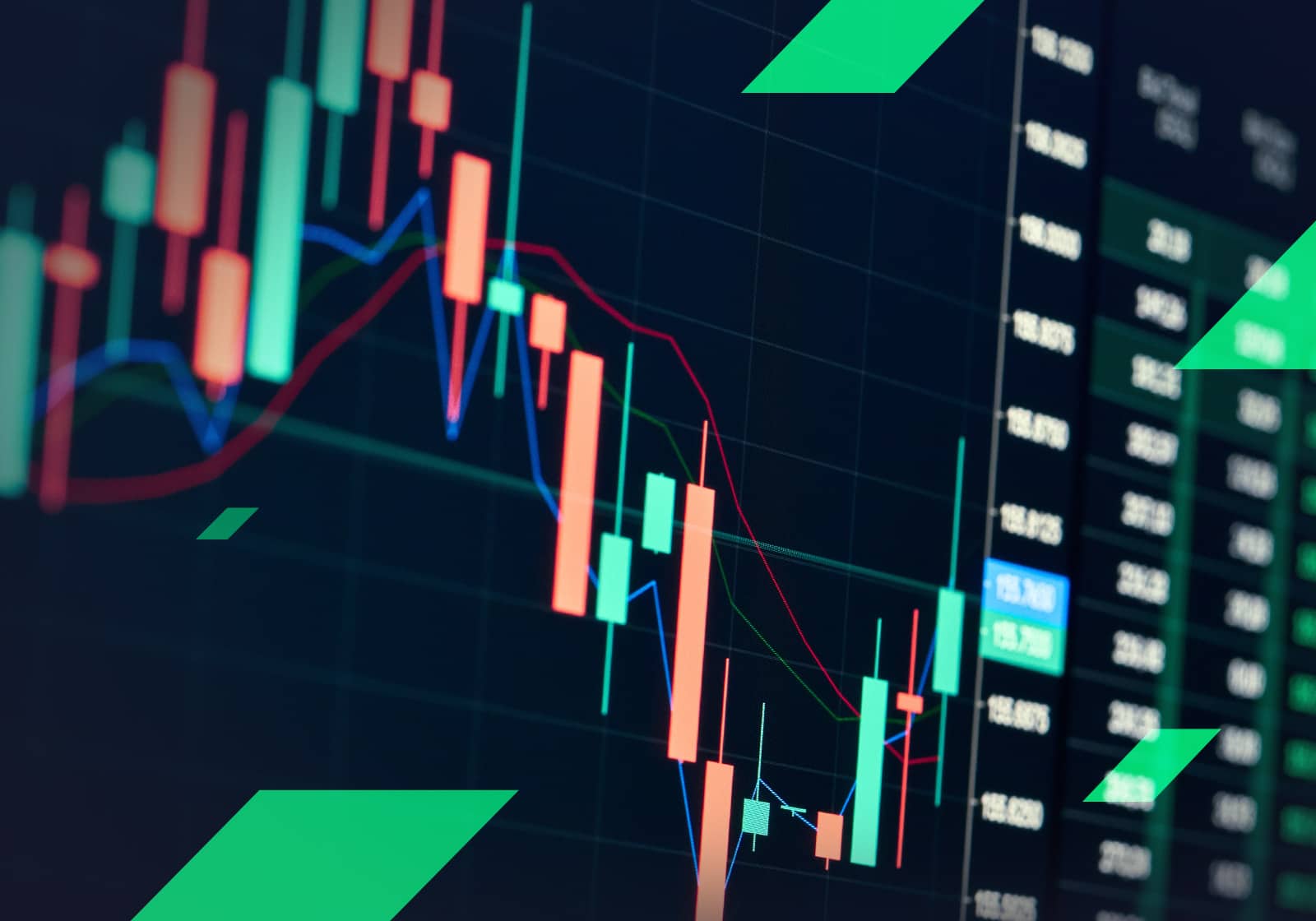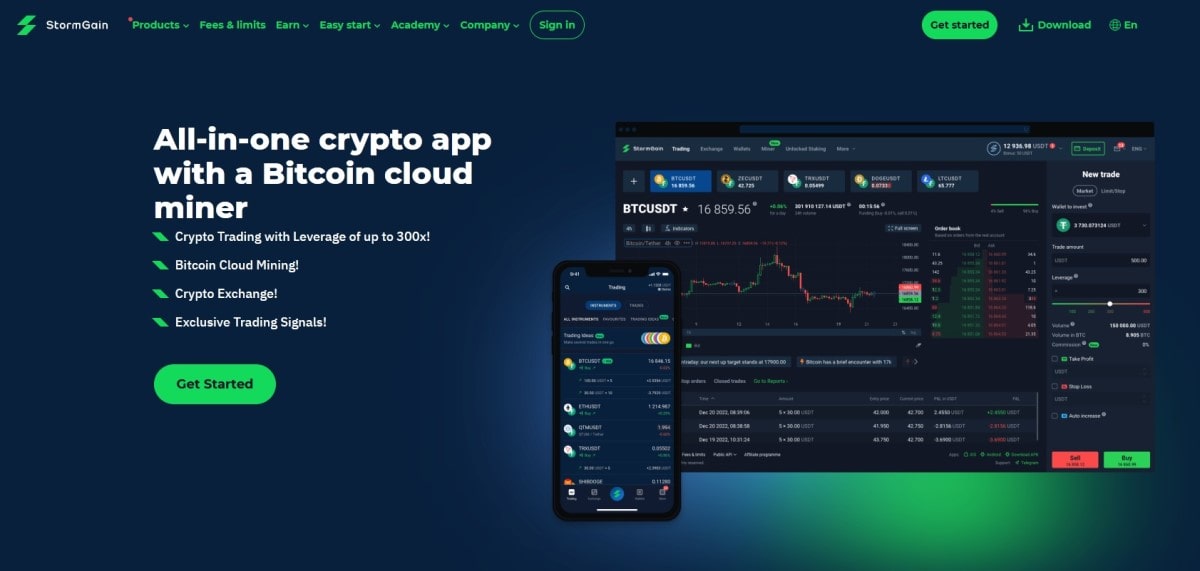What Is Crypto Margin Trading? A Comprehensive Guide

Margin trading is a popular strategy used by cryptocurrency traders. Such operations with digital assets allow traders to quickly make money. Yet, the potential gains from this approach are overshadowed by the considerable risks involved. Seasoned traders who understand the intricacies of crypto margin trading can mitigate potential losses and make significant profits. Do you want to know how to margin trade crypto? In this article, we break down the fundamentals of margin trading on cryptocurrency markets, discuss its risks and benefits, and offer practical tips for anyone who wants to give it a try.
Be careful of leverage. It can go against you. — Walter Schloss, value investor and fund manager.
What is crypto margin trading?
Crypto margin trading is a method of trading cryptocurrencies using borrowed funds to increase your position size in the market. In traditional trading, you buy or sell assets using only the funds you have. However, in margin trading, you can borrow additional funds to amplify your trading power.
The key concepts in margin trading are:
- Margin. The collateral required to borrow funds for trading.
- Leverage. The ratio of borrowed funds to your own capital.
- Margin call. A notification from the exchange when the value of your trading position falls below a certain threshold, prompting you to either deposit additional funds or close out positions to cover potential losses.
- Liquidation. The process by which your positions are automatically closed out by the exchange if your losses exceed the available margin, preventing further losses from accumulating.

What is leverage in crypto trading?
Leverage in crypto trading refers to the use of borrowed funds to amplify the size of a trading position beyond what would be possible with only your own funds. It allows traders to control a larger position in the market with a smaller amount of initial investment.
For example, if you have $1,000 and you're trading with 10x leverage, you can control a position worth $10,000. In other words, for every $1 of your own funds, you're able to trade with $10 in the market.
Leverage magnifies both potential profits and losses. While it can increase the potential returns on successful trades, it also increases the risk of significant losses if the market moves against your position. It's important to use leverage judiciously and to have a solid risk management strategy in place to mitigate potential losses.
How does crypto margin trading work?
Here's how it works. Let's say John decides to engage in margin trading on a cryptocurrency exchange. He deposits $1,000 into his margin account and borrows an additional $4,000, giving him a total trading capital of $5,000 with 5x leverage. John has done thorough research and believes that the price of Bitcoin (BTC) will increase in the short term.
He opens a long position on BTC, buying 0.1 BTC at a price of $50,000. Several days later, the price of BTC rises to $55,000, and John decides to close his position. He sells his 0.1 BTC at a price of $55,000, making a profit of $500 before fees and interest.
After repaying the borrowed $4,000, John is left with a profit of $500. This represents a 50% return on his initial $1,000 investment. Had he not used borrowed funds, his profit on this trade would have been only $100 or 10% of his initial investment. This is an example of a successful margin trade.

Emily also decides to try margin trading on the same cryptocurrency exchange. Like John, she deposits $1,000 into her margin account and borrows an additional $4,000, giving her a total trading capital of $5,000 with 5x leverage. Emily's market analysis leads her to believe that the price of Solana (SOL) will soon rise.
She opens a long position on SOL, buying 50 SOL at $100 each. Unfortunately, the market moves against her expectations, and the price of SOL declines instead of rising. As the price continues to fall, Emily receives a margin call from the exchange because the value of her position has fallen below the required margin level.
To prevent further losses, Emily is forced to close her position at $82 per SOL, resulting in a loss of $900 before fees and interest. This is an example of an unsuccessful margin trade due to the market moving against her expectations, resulting in significant losses.
Isolated margin trading and cross margin trading
Isolated margin and cross margin are two different approaches to managing margin positions in margin trading, each with its own advantages and considerations.
In isolated margin trading, each trading position is separated or isolated from the rest of the trader's funds. This means that the margin allocated to a particular trade is restricted to that trade alone, and losses incurred in one position do not affect the margin or positions in other trades.
In cross margin trading, the margin allocated to a trader's account is shared across all of their open positions. This means that the entire account balance, including profits and losses from all trades, is used as collateral for all open positions.
Isolated margin is generally considered to offer better risk management, as losses are contained within individual positions. In addition, traders have more flexibility in managing their margin allocation, as they can choose the amount of leverage to apply to each individual trade independently.
Cross margin, on the other hand, allows traders to spread risk across multiple positions. Profits from one trade can offset losses from another, potentially reducing the impact of unfavourable price movements.
Crypto margin trading strategies
The strategies used in margin crypto trading are not too different from the strategies applied in regular spot crypto trading. Despite some differences, both approaches share fundamental principles such as market analysis, risk management, trading psychology, and continuous learning.
Long and short margin trading
When using leverage in crypto trading, traders can open either long or short positions, just as they can in spot trading. This flexibility allows them to profit from both rising and falling prices.
Leveraging trading positions
The fundamental difference between margin trading and spot trading is leverage. Leverage ratios vary between exchanges, with common options ranging from 2x to 100x or more. Higher leverage magnifies both potential profits and losses, so it's essential to use leverage judiciously and understand the associated risks.
Choosing the right leverage ratio for your trades is crucial for effective risk management and depends on many factors, such as your trading experience, risk tolerance, trading strategy, current market conditions, and volatility and liquidity of the chosen crypto asset.
Risk management techniques
Because of the increased risks associated with leverage, risk management in margin trading is even more critical than usual. There are a number of techniques to help crypto traders mitigate the risks of this trading method.
- Stop-loss orders. Implementing stop-loss orders is essential to limit potential losses. These orders automatically trigger a market sell (for long positions) or buy (for short positions) if the price reaches a specified level, helping to mitigate losses before they escalate.
- Position sizing. Avoid putting all your funds into a single trade or asset. Determine the appropriate size of your trading positions based on your risk tolerance, account balance, and the level of leverage you're using.
- Leverage limitation. Avoid overleveraging, as it can increase the likelihood of liquidation and significant losses. Consider using lower leverage ratios, especially if you're new to margin trading or trading volatile assets.
- Avoiding margin calls. Keep a close eye on your margin levels and account balance to avoid margin calls and potential liquidation. Regularly assess the health of your positions and be prepared to adjust or close them if necessary to maintain sufficient margin.
- Staying informed. Stay up to date with market trends, news and events that may affect cryptocurrency prices.
- Regular analysis and adjustments. Continually analyse your trading strategy and results to identify areas for improvement.
Tips for crypto margin trading
Experienced traders adhere to a number of simple principles, which reduce risks and increase the profitability of crypto margin trading. They include:
- Cryptocurrency selection. You need to carefully select cryptocurrencies for margin trading. Cryptos with a low market cap and significant volatility are not suitable for margin trading, as they carry a very high risk of loss. On the other hand, the profitability of margin crypto trading in a very low volatility situation is also low. In this case, financial losses in the form of fees and interest may exceed the profits from the trades.
- Understand the fees. Ensure that you have a thorough understanding of the fees and interest charged by the exchange for the use of borrowed funds. This will help minimise financial losses.
- Simulated trading. Before you get started, consider practising with a demo account or paper trading first. This makes it possible to test different leverage ratios and trading strategies without risking real money.
- Start small. If you're new to margin trading, start with a small amount of funds and low leverage ratios. In this way you can gain experience and confidence without risking significant losses.
Risks associated with crypto margin trading
One of the most significant risks of margin trading is the potential for increased losses. Leverage amplifies both profits and losses, meaning that even small price movements can result in significant losses, especially when using high leverage ratios. If the value of your trading positions falls below a certain threshold, the exchange will issue a margin call and liquidate your positions to cover the losses.
In addition, it should be remembered that borrowing funds for margin trading typically incurs interest costs, which can erode profits, especially during extended trading periods.
Margin trading pros and cons
Margin trading is a fairly popular approach to trading that has its own significant advantages and disadvantages.
Pros:
- Increased profit potential. Margin trading allows traders to amplify their trading positions with borrowed funds, potentially leading to higher returns on successful trades.
- Trades diversification. Margin trading provides an opportunity to diversify trading strategies and exposure to different assets and trading pairs due to the larger amount of funds available.
- Lowering the entry threshold. Margin trading provides access to crypto trading even for traders who do not have sufficient funds for serious trades.
Cons:
- Increased risk of loss. It is possible to lose significantly more money in a short amount of time than with regular trading.
- Interest costs. Borrowing funds for margin trading usually involves interest costs, which must be considered and incorporated into your trading strategy so that the potential profits outweigh the interest costs.
- Increased stress. Trading itself is a stressful activity. The increased risks in margin trading make it even more stressful.
- Trading experience requirements. Margin trading requires a deep understanding of trading mechanics, risk management strategies, and market dynamics.
StormGain margin trading
The StormGain cryptocurrency platform is an all-in-one solution for traders and investors alike. With StormGain, accessing margin trading is straightforward and simple, catering to both seasoned traders and newcomers. Leverage up to 300x empowers users to significantly magnify their positions. The platform also offers a range of other features to enhance your crypto margin trading experience, including risk management tools, access to a wide range of cryptocurrencies and trading pairs for maximum diversification, educational videos, trading signals, and more.

Tags
Try our Bitcoin Cloud Miner and get additional crypto rewards based on your trading volume. It's immediately available upon registration.
Try our Bitcoin Cloud Miner and get additional crypto rewards based on your trading volume. It's immediately available upon registration.



